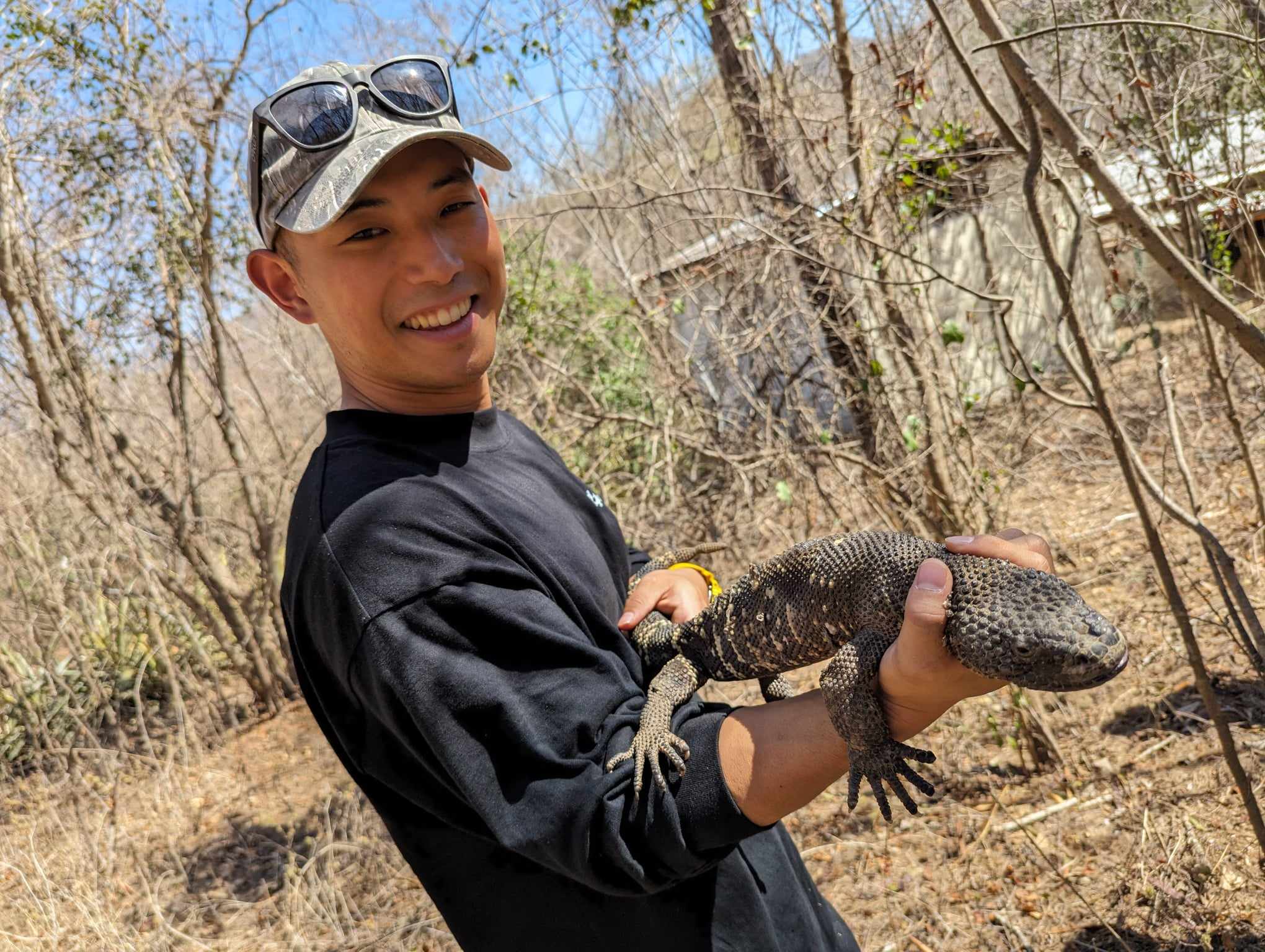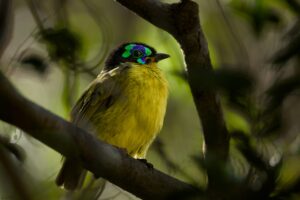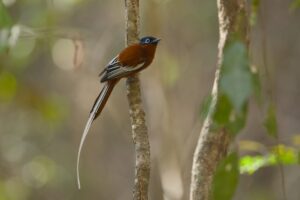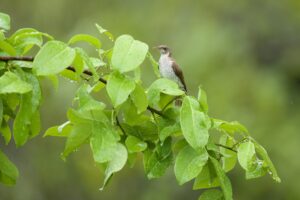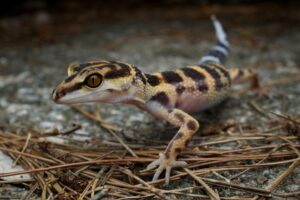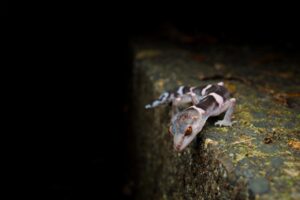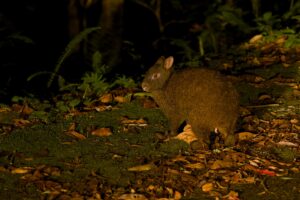On my recent trip to Panama, I had the incredible opportunity to observe the Tropical Royal Flycatcher (Scientific Name: Onychorhynchus coronatus). This bird is best known for its stunning crest, which resembles a royal crown. Normally hidden, this breathtaking display is rarely seen—but on this trip, I was lucky enough to witness it! Here, I share the unforgettable experience of that moment.
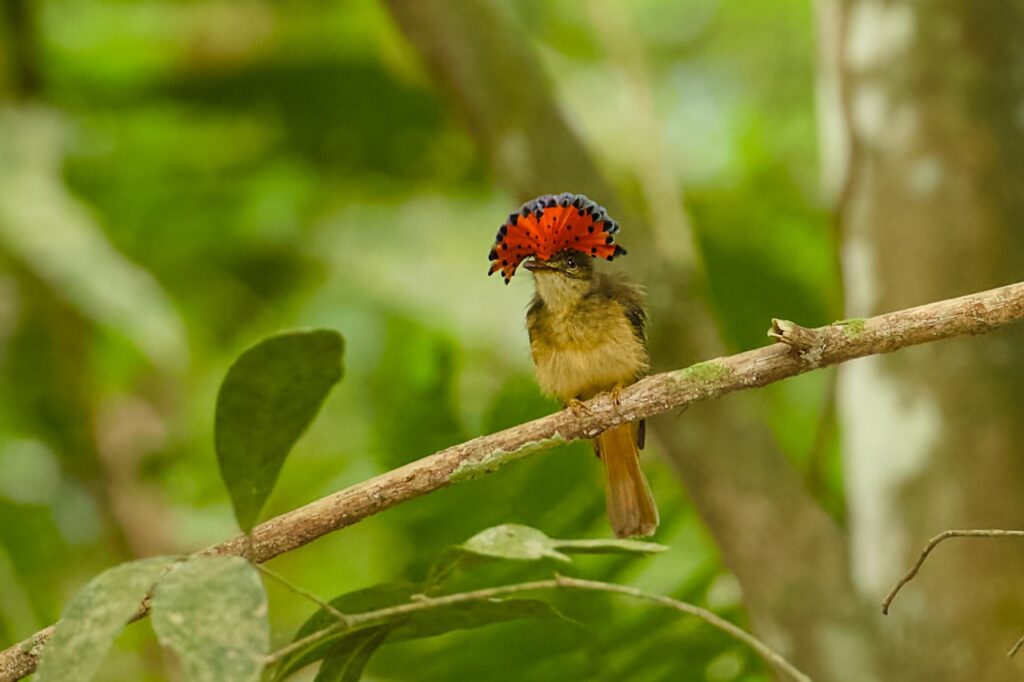
Searching for the Tropical Royal Flycatcher
My journey took me to a town in eastern Panama. Accompanied by a local guide, we ventured just a few dozen meters from the city into a small riverside forest. The Tropical Royal Flycatcher inhabits trees along riverbanks and measures about 20 cm in length. Compared to other small flycatchers in the region, it is relatively large.
To increase our chances of spotting the bird, we waded into the river wearing sandals, carefully scanning the branches above us as we moved through the gentle current.
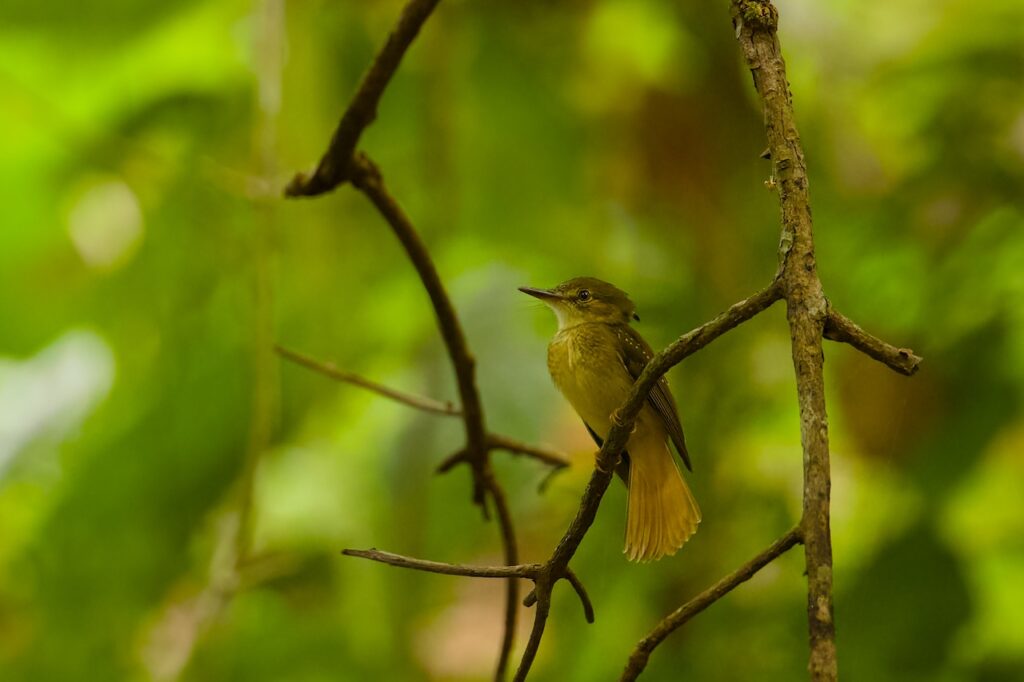
The Moment of the Crown Unveiling
Male Tropical Royal Flycatchers possess a vibrant red crest, while females have a yellow one. However, this spectacular feature is usually concealed and is only displayed during courtship or as a defensive behavior.
After hours of patient observation along the river, a male finally perched on a nearby branch. We remained still, barely breathing in anticipation. Then, suddenly, the crown unfurled!
For just five brief seconds, a brilliant fan of red and blue feathers radiated outward, transforming the bird’s appearance into something almost otherworldly. It was a sight of pure magic—a fleeting moment that felt almost unreal. The next morning, we continued our observations and were fortunate enough to witness the crest opening once again.
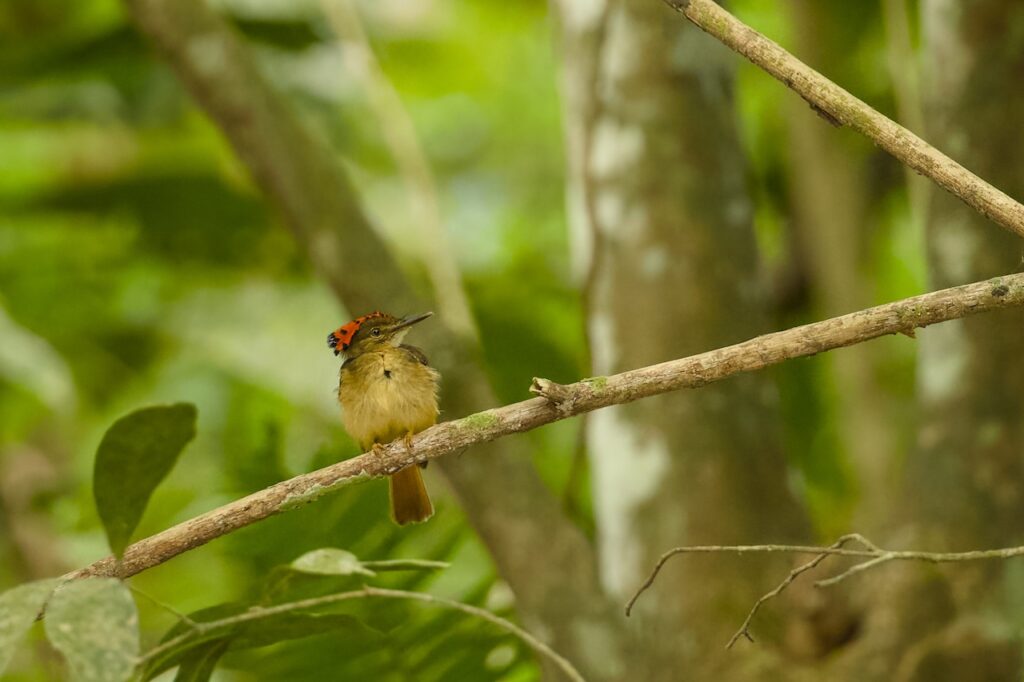
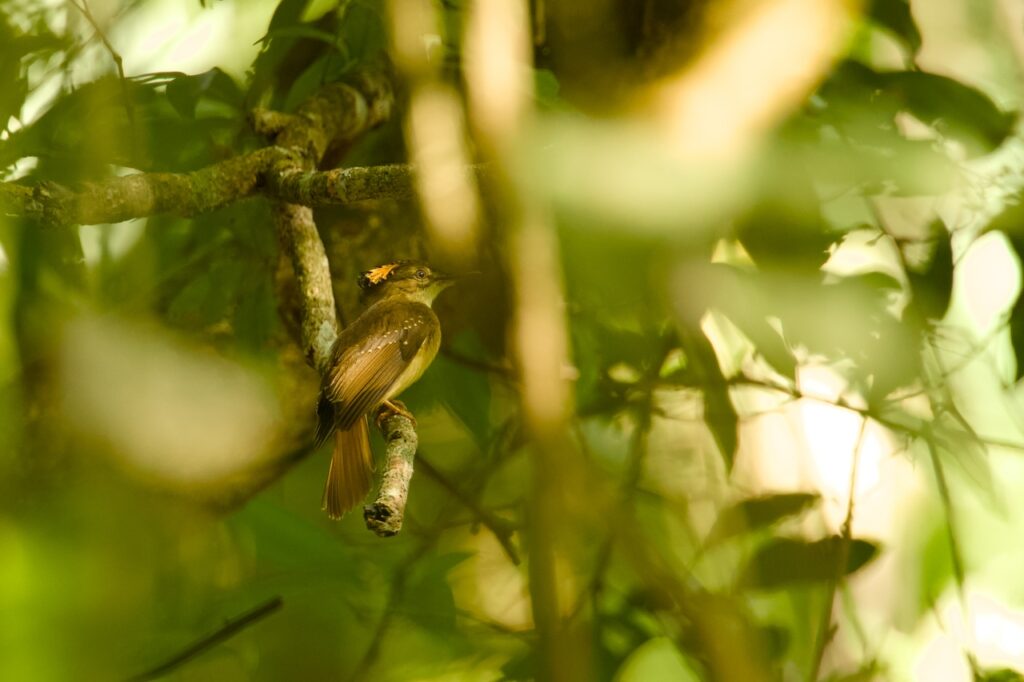
Behavior and Ecology of the Tropical Royal Flycatcher
This species primarily nests along riverbanks, with peak nesting activity occurring from mid-January to early February. Interestingly, males construct not just one, but three nests—one real and two decoys. This clever strategy helps protect their eggs and chicks from predators such as snakes.
Once the nest is completed, the male showcases his crest to attract a mate. If the female approves, the pair forms a bond, leading to successful breeding.
Conservation Status and Threats
Despite its extraordinary appearance, the Tropical Royal Flycatcher has adapted to living near human settlements. However, deforestation and habitat loss pose significant threats to its population. Some subspecies are already facing the risk of extinction.
Witnessing this bird in its natural habitat reinforced my deep appreciation for the delicate balance of nature. Seeing its elusive crest in full display was a once-in-a-lifetime experience that I will never forget.
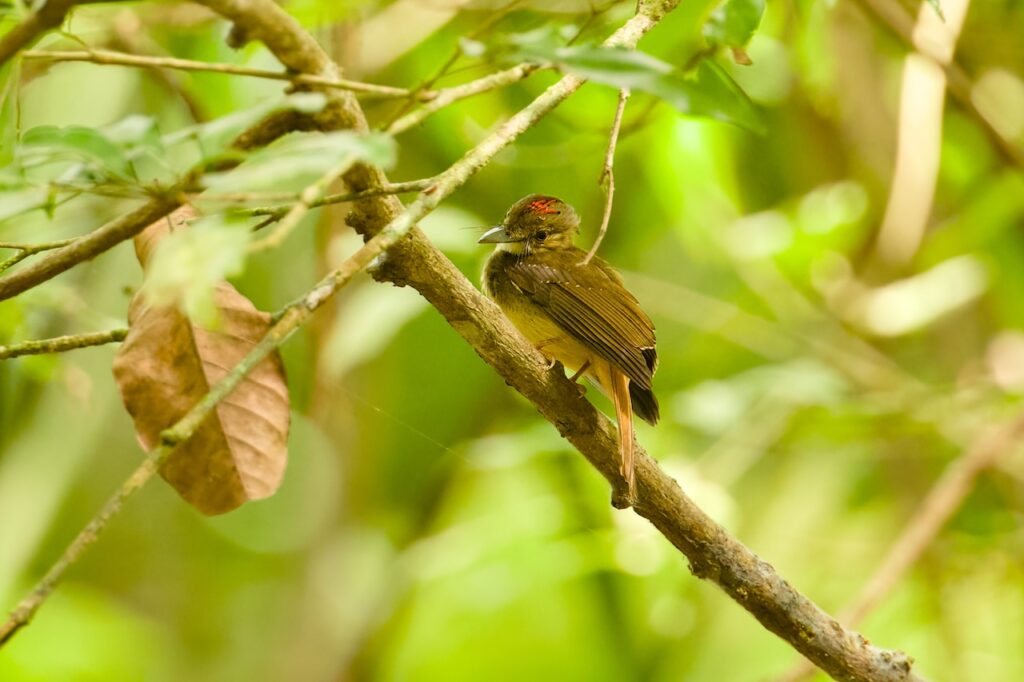
Final Thoughts
Observing the Tropical Royal Flycatcher requires patience, knowledge of its habitat, and a bit of luck. Even if you find one, there is no guarantee you’ll witness its magnificent crest. But one thing is certain—you won’t see it unless you go looking.
If you ever have the chance, I highly recommend embarking on your own journey to discover this elusive beauty. And if fortune favors you with a glimpse of its crown, consider yourself among the very few to have witnessed nature’s hidden masterpiece!


